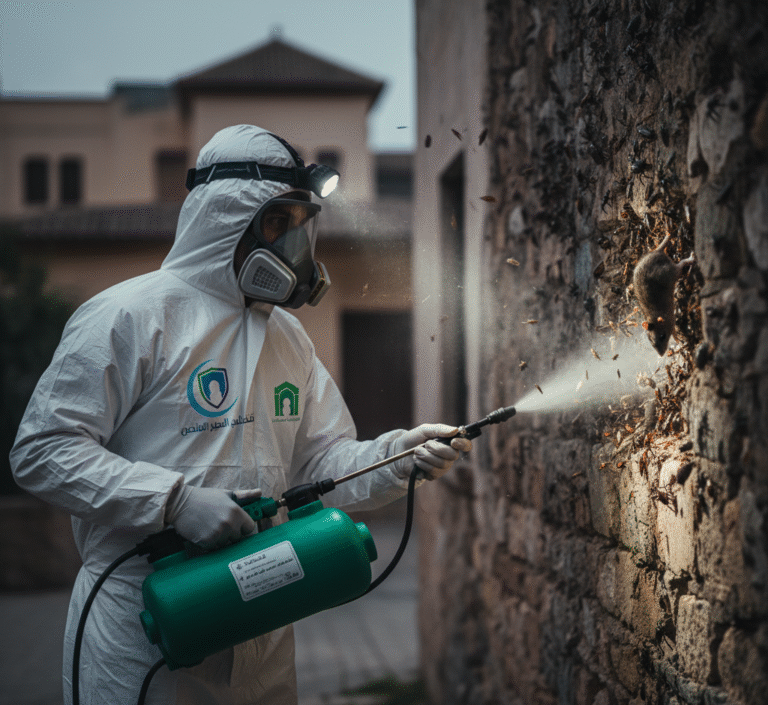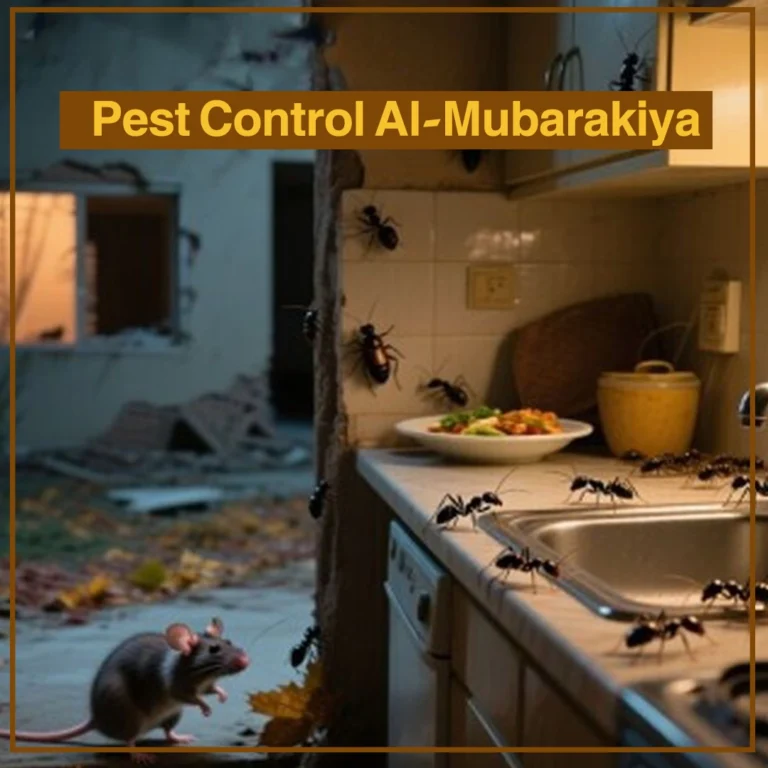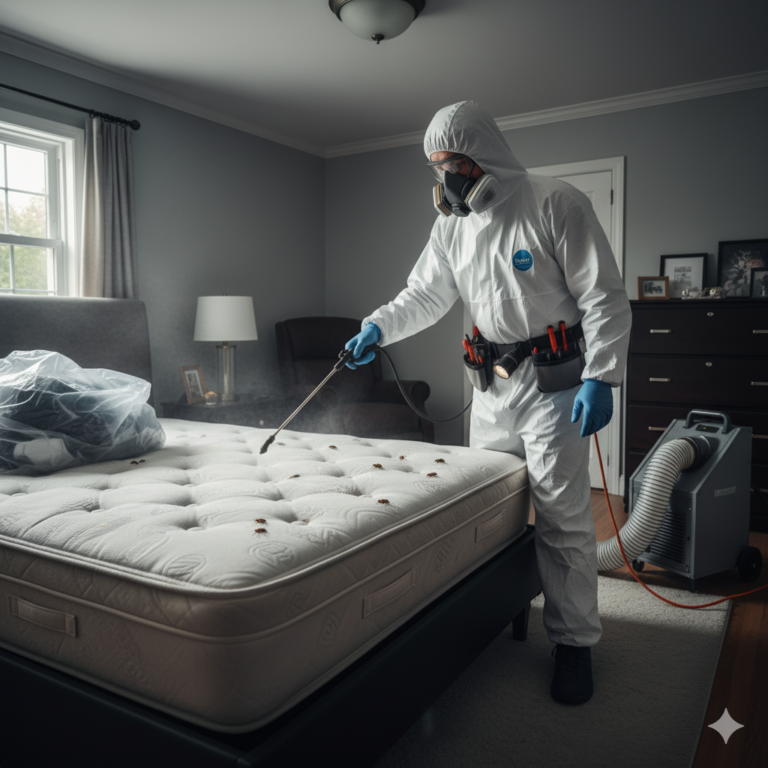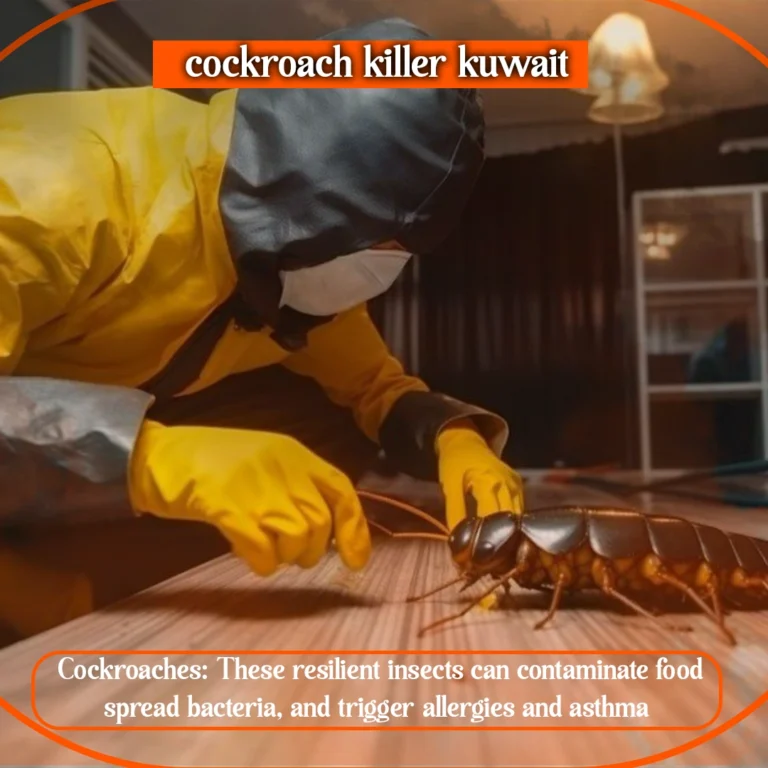Pest Control Fahaheel Contact us now 98949693 Special offers. Pest control Fahaheel Special offers at prices that suit everyone We. use the best pesticides We eliminate. cockroaches, mice, ants and bedbugs
Introduction to Pest Problems
In many households, the presence of pests such as cockroaches, mice, ants, and bedbugs is not just an annoyance; it poses significant health risks and can lead to considerable property damage. These pests are often resilient and can reproduce quickly, making them challenging to control once an infestation takes hold. Cockroaches, for instance, are known carriers of diseases like salmonella and gastroenteritis, potentially contaminating food and surfaces within the home. Mice can also spoil food and transmit diseases, while their gnawing habits can weaken.
the structure of a house, leading to costly repairs.
Ants, although often viewed as harmless, can invade pantries, contaminate. food stores, and cause structural damages through their nesting behaviors, especially carpenter ants. Meanwhile, bedbugs are notorious for their ability to disrupt. sleep and cause uncomfortable bites, contributing to anxiety and stress among affected individuals. In addition to their direct impacts on health and comfort, the psychological effects of dealing with a pest infestation. can further exacerbate the situation.
Understanding these common pest problems is crucial in acknowledging the necessity of effective pest control measures. This blog post aims to educate homeowners about the importance of identifying early signs of infestations and implementing proactive strategies to. mitigate potential pest-related issues. By addressing these concerns, homeowners can safeguard their health, preserve their property, and cultivate a better living environment. Effective pest control is not merely about eliminating visible pests; it involves understanding pest behaviors, prevention strategies, and when necessary, engaging professional services to address infestations comprehensively.
Understanding Cockroach Infestations
Cockroaches are resilient insects that have adapted to thrive in diverse environments, including human homes. They belong to the order Blattodea and exhibit behaviors that carry significant implications for human health and hygiene. Common species, such as the American, German. , and Oriental cockroaches, vary in size and color but share. notable characteristics such as nocturnal activity and a propensity to hide in dark, warm areas during the day. Their presence often indicates a larger problem, as they tend to gather in numbers where food, moisture, and shelter are readily available.
The reasons cockroaches invade homes are primarily linked to survival. These pests are attracted to food residues, waste, and leaks, making kitchens and bathrooms prime locations for infestations. Once they find a suitable environment, their populations can escalate quickly; a single female cockroach can produce dozens of offspring in a year, leading to rapid colonization. This exponential reproduction rate can overwhelm homeowners, making it essential to understand how to identify the early signs of an infestation.
Common indicators of a cockroach presence include the sighting of live or dead roaches, droppings that resemble coffee grounds or black pepper, and a distinct, musty odor often associated with larger infestations. Beyond the nuisance they present, cockroaches pose significant health risks due to their ability to carry pathogens and allergens. They have been linked to the spread of diseases such as gastroenteritis and Salmonella, as well as allergic reactions in sensitive individuals. Recognizing the behavioral traits and potential health implications of cockroaches is crucial in developing effective pest control strategies and implementing preventive measures to safeguard homes against these unwelcome intruders.
Getting to Know Mice as Pests
Mice are small rodents that have adapted remarkably well to urban environments, making them one of the most common pests encountered in homes and businesses. Their ability to thrive in close proximity to humans is attributed to their high reproductive rates and resourcefulness in finding food and shelter. A single female mouse can produce up to 10 litters annually, with each litter comprising an average of six to eight pups. This rapid reproduction cycle enables mouse populations to grow exponentially, especially in favorable conditions.
In urban areas, mice tend to inhabit areas where food is readily available. They often make nests in attics, garages, basements, and even within wall cavities, favoring spaces that provide warmth and protection. Their nimble bodies grant them the ability to squeeze through small openings, which is another reason why they frequently infiltrate human living spaces. The common house mouse, in particular, is known for its adaptability and can be found in a variety of environments, from crowded city apartments to suburban homes.
The damage caused by mice extends beyond the immediate destruction of stored food and property. Mice have a penchant for gnawing on wires, which poses a significant fire hazard, and their droppings can contaminate food supplies, leading to potential health risks. Furthermore, mouse droppings and urine can act as vectors for various diseases, such as hantavirus and leptospirosis, putting both human and pet health at risk. In summary, understanding the behavior and habits of mice is crucial for effective pest control, allowing for the implementation of preventative measures to mitigate their impact on properties and health.
Ants: Tiny Yet Troublesome
Ants represent one of the most pervasive pests control that can invade both residential and commercial spaces. With over 12,000 known species, including commonly encountered varieties such as the carpenter ant, odorous house ant, and pavement ant, these small insects are capable of causing significant issues. Their foraging behavior leads them to scavenge for food and water, often infiltrating kitchens and pantries in search of sustenance. This search for nourishment is not merely a nuisance; it can result in contamination of food sources, which poses health risks to humans.
Ant colonies are highly organized social structures, typically comprising workers, soldiers, and a queen. The worker ants are responsible for foraging, as well as caring for the queen and the larvae. When a food source is discovered, they create pheromone trails that others in the colony can follow, resulting in a seemingly sudden influx of ants overtaking a space. This behavior underscores the challenges of controlling an ant infestation since their numbers can escalate rapidly if not addressed promptly.
Effective strategies for managing ants include maintaining cleanliness in the home to eliminate food residues, sealing entry points to prevent access, and employing bait traps that attract and poison the foraging ants, subsequently affecting their colony population. In more severe cases, professional pest control services may be warranted, as they can provide tailored treatments designed to eliminate the specific species of ants intruding into a property. One key to successful pest control is identifying the type of ant present, as this knowledge can significantly influence the choice of control measures, leading to more effective outcomes.
Bedbugs: The Hidden Threat
Bedbugs, scientifically known as Cimex lectularius, have become an increasingly concerning pest in both residential and commercial settings, particularly in homes and hotels. Their life cycle demonstrates a remarkable adaptability, with females laying up to five eggs daily. These eggs hatch within a week, rapidly leading to significant infestations. In ideal conditions, bedbugs can develop from eggs to adults in as little as four to five weeks. This rapid reproduction allows them to spread swiftly, often before their presence is even acknowledged by occupants.
Identifying bedbug bites is critical for early detection of an infestation. These bites typically manifest as small, red, itchy welts and are often arranged in a linear or clustered pattern on the skin. Bedbugs tend to feed at night, while their small, flattened bodies allow them to conceal themselves effectively. Common hiding spots include mattresses, box springs, headboards, baseboards, and even cracks in walls. Their nearly invisible presence can make spotting them quite challenging, which explains the psychological impact that these pests can have on individuals, leading to anxiety and sleeplessness.
Preventive measures are essential in managing bedbug infestations. Regular inspections, especially in shared accommodations or during travels, can help detect the pests before they become a larger problem. Implementing simple practices, such as washing and drying bedding at high temperatures, vacuuming frequently, and utilizing mattress encasements, can reduce the likelihood of a bedbug invasion. Control methods will often require a combination of heat treatments, insecticides, and thorough cleaning. It’s advisable to consult pest control professionals for effective eradication strategies, particularly in severe cases of infestation.
Signs of Infestations: What to Look For
Detecting infestations of cockroaches, mice, ants, and bedbugs at an early stage is crucial for effective pest control. Each type of pest exhibits distinct signs that signal their presence in a home or business. Recognizing these signs can help prevent a minor issue from escalating into a widespread infestation.
For cockroaches, common indicators include droppings, egg cases, and a strong, oily odor. Their droppings are typically small, dark, and cylindrical and may resemble coffee grounds. Spotting these droppings near food sources or in dark, damp areas indicates that immediate action is necessary. Additionally, the presence of shed skins and egg cases may further confirm a cockroach infestation.
Mice, on the other hand, often leave behind droppings that are small, pellet-shaped, and can be found along walls or near food storage areas. Other signs may include gnaw marks on wood or plastic, nests made of shredded paper or fabric, and the sounds of scratching or scurrying in the walls and ceilings during nighttime. Furthermore, any visible trails of urine or oily smudges along surfaces may indicate frequent mouse activity.
When it comes to ants, look for trails of ants marching in a line, particularly leading to a food source. Dead ants and fragments of their nests can also be telling signs. Ant infestations can often become overwhelming quickly, so identifying their presence early is important for effective measures.

Lastly, bedbugs typically leave their presence known through telltale signs such as rusty or dark stains on bedding, along with small, itchy red bites on skin. Adult bedbugs are often visible, and finding their eggs or shed skins indicates the need for immediate intervention. Prompt response upon noticing these early warning signs can significantly reduce the extent of the infestation and facilitate more effective pest control methods.
DIY Pest Control Methods
The rise in pest infestations has prompted many homeowners to seek effective, budget-friendly solutions. DIY pest control methods encompass a range of natural remedies and commercially available products aimed at addressing common invaders such as cockroaches, mice, ants, and bedbugs. Each method comes with its own set of advantages and disadvantages, influencing the choice made by individuals facing pest issues.
Natural remedies tend to be appealing due to their low cost and eco-friendly nature. For instance, a mixture of vinegar and water can effectively deter ants when sprayed around entry points. Additionally, essential oils such as peppermint and tea tree oil are known for their repellant properties against various pests, including bedbugs and spiders. However, while they may provide temporary relief, the effectiveness of these natural solutions often varies, leading to incomplete pest control in more significant infestations.
Conversely, store-bought products offer a range of options, including traps, sprays, and baits specifically designed for targeted pests. For example, mouse traps and cockroach bait stations can be highly effective when placed strategically within infested areas. These products are generally more potent than homemade remedies, which may be crucial when dealing with larger infestations. Nonetheless, they can also carry risks, such as toxicity to pets and children, requiring careful consideration and safe handling practices.
It is worth noting that while DIY methods can be an effective first step in pest management, some infestations may demand professional intervention. Signs of significant pest activity, such as droppings, nests, or widespread damage, indicate that a deeper, more comprehensive approach is necessary. In these cases, enlisting a pest control expert may be a prudent choice to ensure the effective eradication of the problem.
When to Call in the Professionals
Determining when to call in pest control professionals can be crucial for effectively managing infestations of cockroaches, mice, ants, and bedbugs. Homeowners often encounter scenarios where they may hesitate before seeking professional assistance, yet certain signs and situations warrant prompt intervention. For instance, if an infestation persists despite employing home remedies or over-the-counter treatments, it is advisable to consult a pest control expert. Professionals are equipped with specialized knowledge and advanced tools that can provide a more effective and long-lasting solution than DIY methods.
Additionally, if you notice signs of significant pest activity—such as droppings, nests, or damage to structures—promptly seeking out a licensed pest control service becomes essential. Ignoring these signs can lead to more extensive damage and higher costs. Professionals not only assess the situation comprehensively but also identify the root cause of the infestation, ensuring that treatments target the source rather than just the symptoms.
Another critical factor influencing the decision to call in experts is the type of pest involved. For instance, bedbugs require specific treatment protocols that might not be effectively managed without professional aid, as their resilient nature makes them difficult to eradicate. Moreover, licensed pest control providers have access to specialized products that are often not available to the public and can offer strategic solutions tailored to the specific pest issue at hand.
When selecting a pest control professional, prioritize choosing a licensed and experienced provider. This ensures that they adhere to industry standards and regulations, which is vital for effective pest management. A reputable service will conduct a thorough inspection, discuss the treatment options, and inform you of preventive measures to avoid future infestations. Therefore, identifying the right time to engage professionals is a proactive step in maintaining a safe and healthy living environment.
Preventative Measures to Keep Pests Away
To effectively manage pest issues in residential spaces, homeowners should adopt comprehensive preventative measures that specifically target the conditions conducive to pest infestations. One of the most critical steps in achieving a pest-free environment is maintaining high standards of sanitation. Regular cleaning and proper food storage are essential; food particles left exposed can attract various pests, including cockroaches and ants. It is advisable to promptly clear away food scraps, vacuum regularly, and ensure that surfaces are wiped clean to eliminate potential food sources.
Another pivotal aspect of pest prevention is the sealing of entry points within the home. Pests can exploit even the smallest openings, so homeowners should conduct a thorough inspection of their properties for cracks and gaps. Common areas to check include windows, door frames, and utility line entries. Utilizing caulk or expanding foam can effectively block these potential entryways for mice and other pests. Additionally, installing door sweeps can prevent insects from entering through gaps beneath external doors.
Environmental conditions play a significant role in deterring pests. To maintain a pest-free environment, it is vital to manage moisture levels, as many insects thrive in damp conditions. Homeowners should repair leaks promptly and use dehumidifiers in basements or crawl spaces. Furthermore, keeping yards well-maintained by trimming vegetation near the house and removing standing water can significantly reduce outdoor pest populations that might seek to enter the home.
Finally, occupants should consider routine inspections and pest control services as part of preventive maintenance, especially during transitional seasons when pests tend to invade homes seeking shelter. By integrating these practices into their daily routines, homeowners can substantially reduce the likelihood of encountering infestations, ultimately creating a safer and more comfortable living space.
Tags
Categories
-
Pest Control Al-Andalus
Pest Control Al-Andalus We offer you the. best services to remove panic from the home, family, elderly and children. We have […]
-
Pest Control Al Firdous
Pest Control Al Firdous We offer you the. best services to remove panic from the home, family, elderly and children. We have […]
-
Pest Control Al-Masayel
pest control Al-Masayel We offer you the. best services to remove panic from the home, family, elderly and children. We have a […]
-
Pest Control Al-Mubarakiya
pest control Al-Mubarakiya We offer you the. best services to remove panic from the home, family, elderly and children. We have […]
-
Bed bug control Kuwait
Bed bug control Kuwait Are you looking for safe bedbug control in Kuwait? We offer effective solutions that are safe […]
-
cockroach control in Kuwait
Cockroach control in kuwait are among the most annoying and dangerous insects to health, due to their ability to transmit diseases […]





